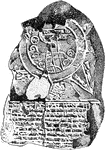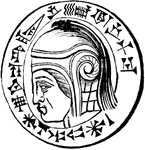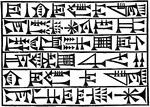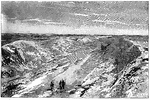Clipart tagged: ‘babylonian’

A Babylonian Map of the World
"A tablet of dark brown clay, much injured, dating from the 8th or 7th century B.C. The two large concentric…

King Merodach-idin-akhi
An ancient Babylonian stone carving of King Merodach-idin-akhi, the Mesopotamian sun god.

Nebuchadnezzar
"The most illustrious of Babylonian kings, was the son of Nabopolassar, the general of the Babylonian…

Oannes
"The name of a Babylonian god, who, in the first year of the foundation of Babylon, is said to have…


